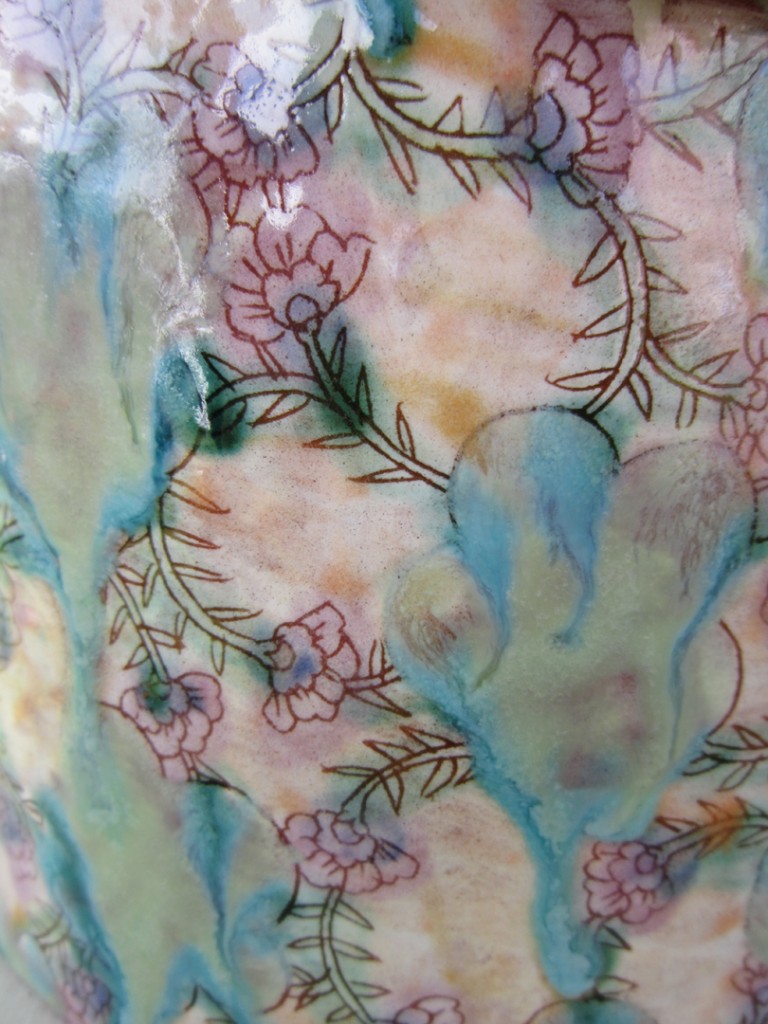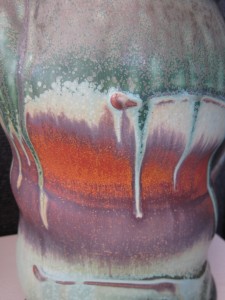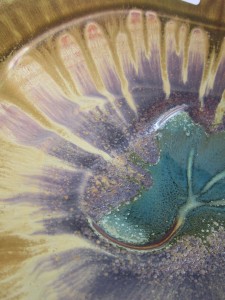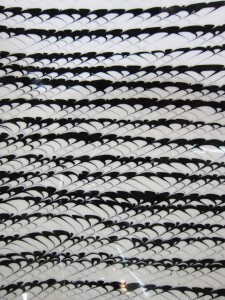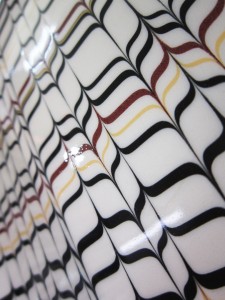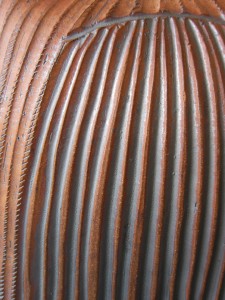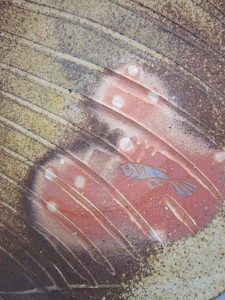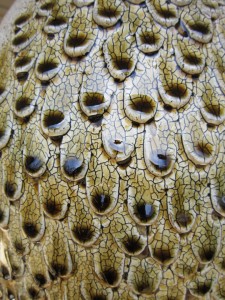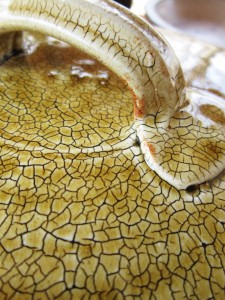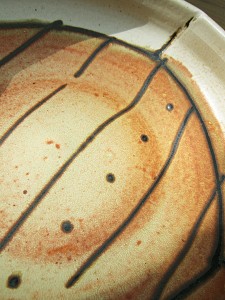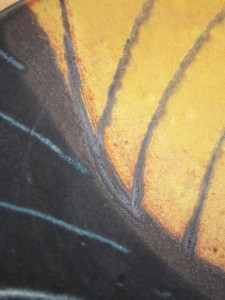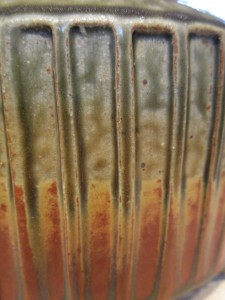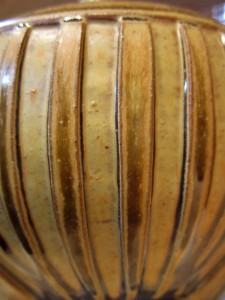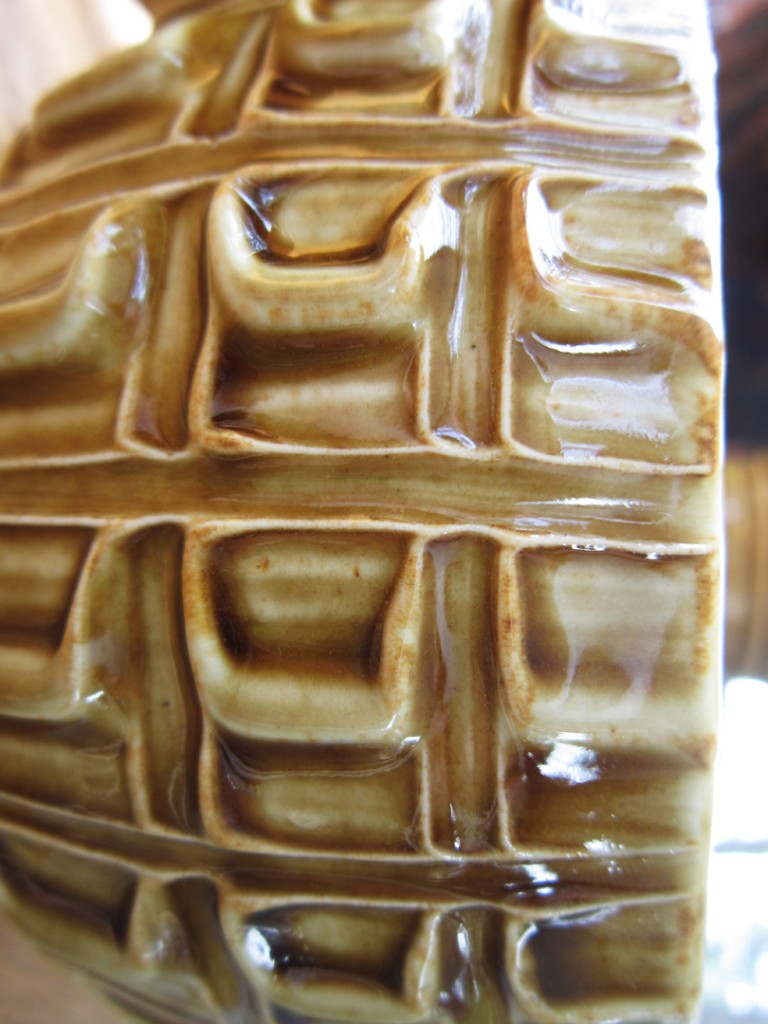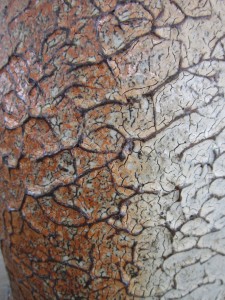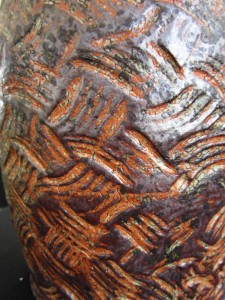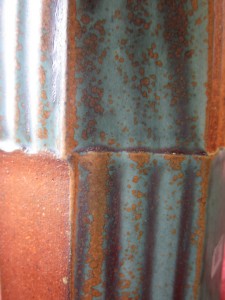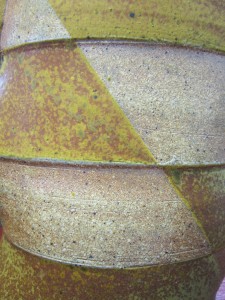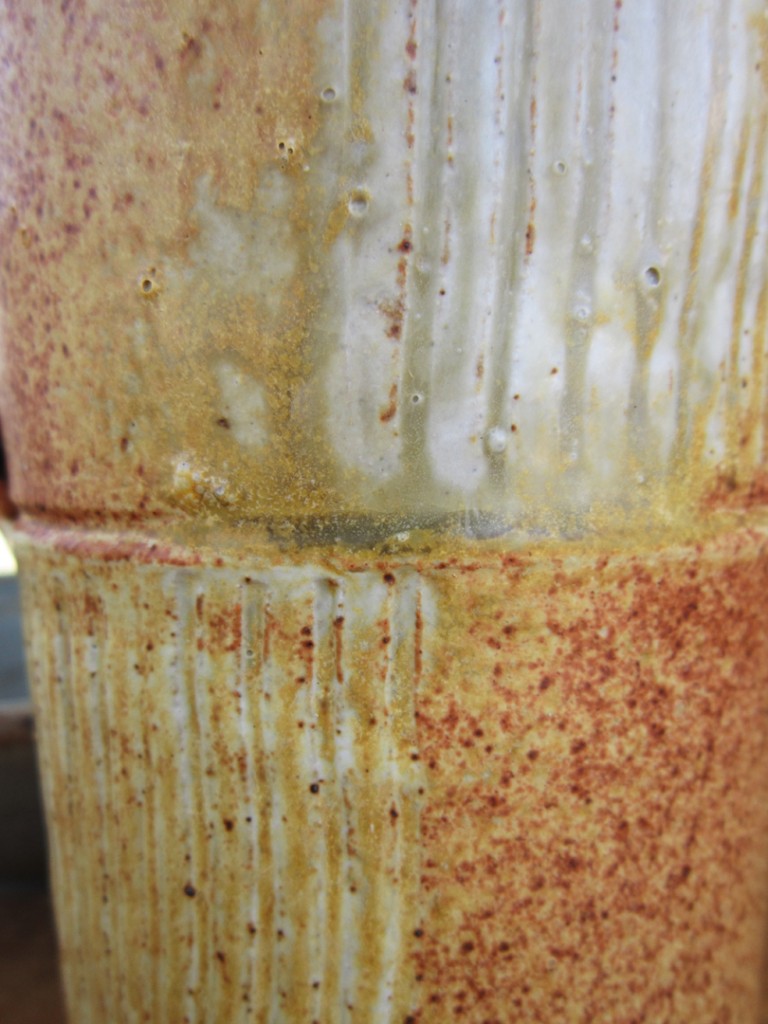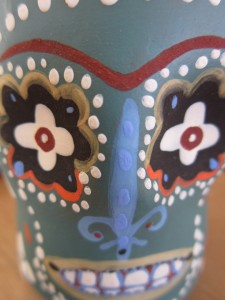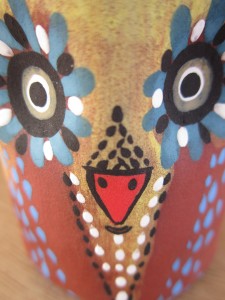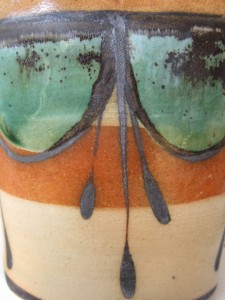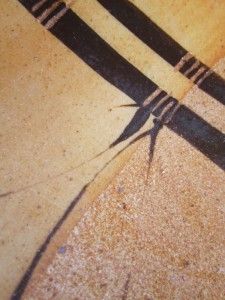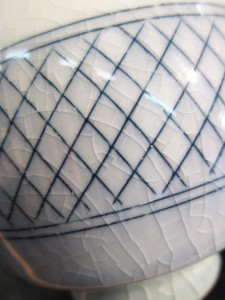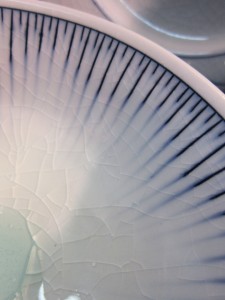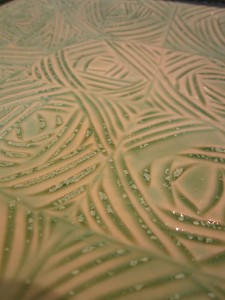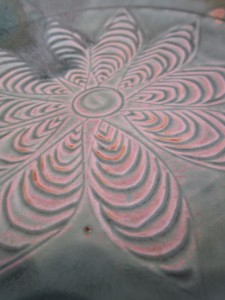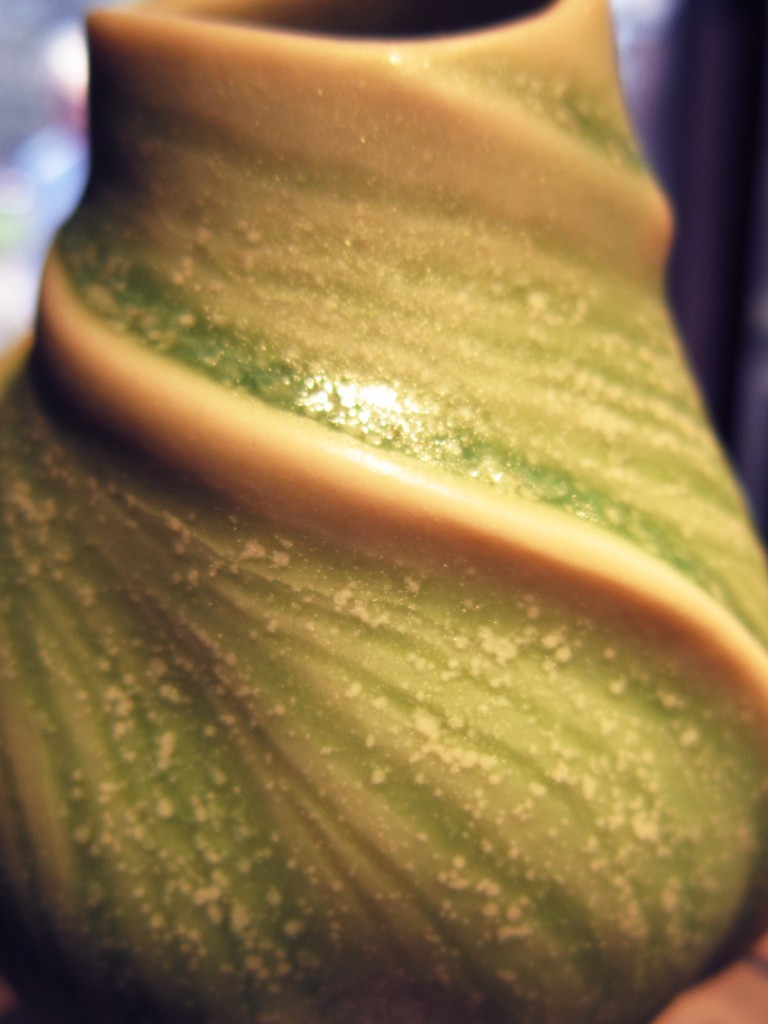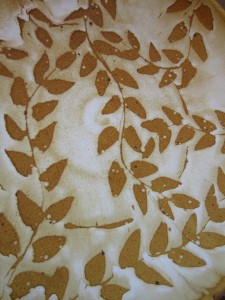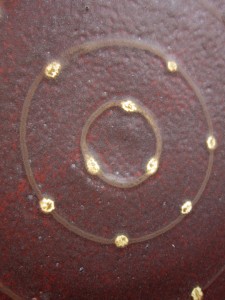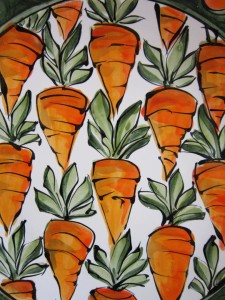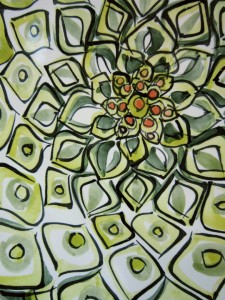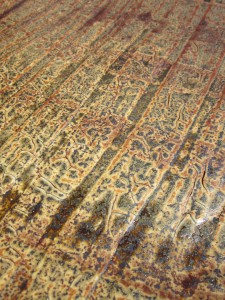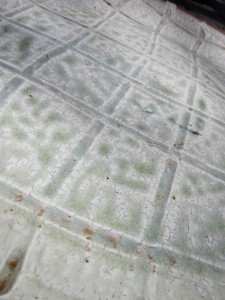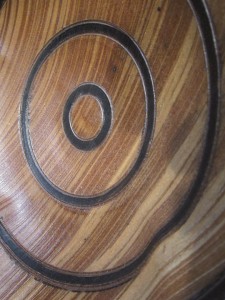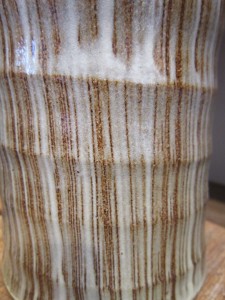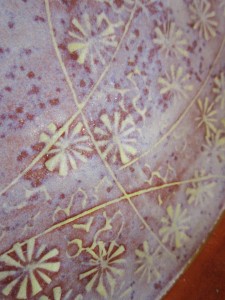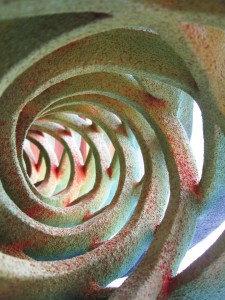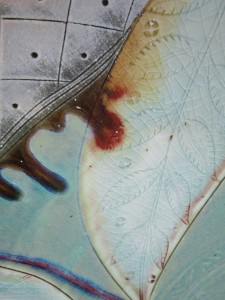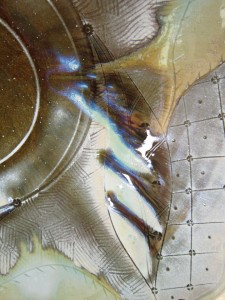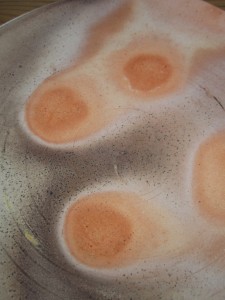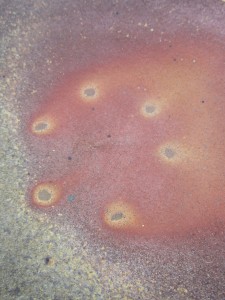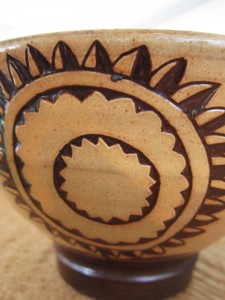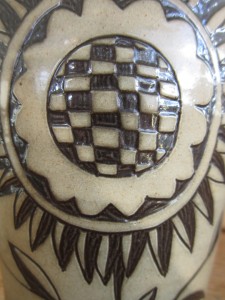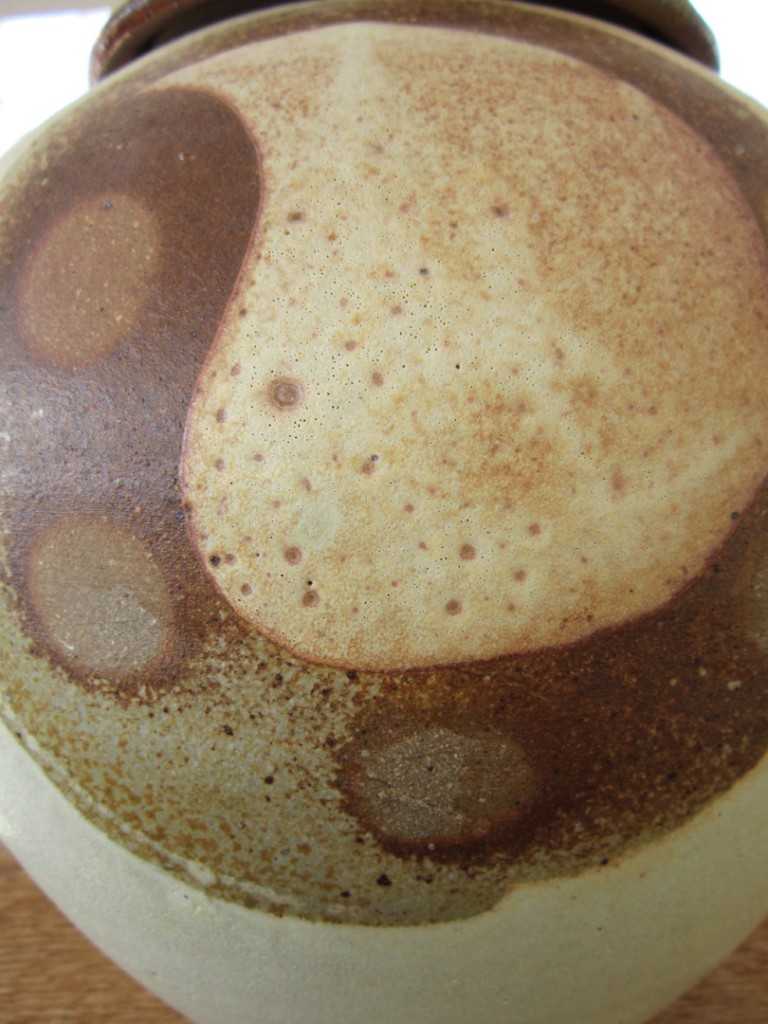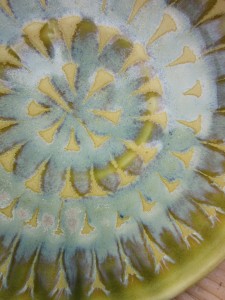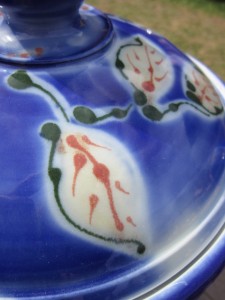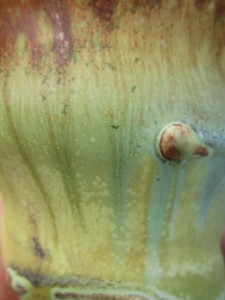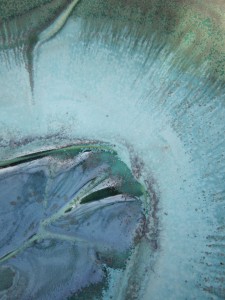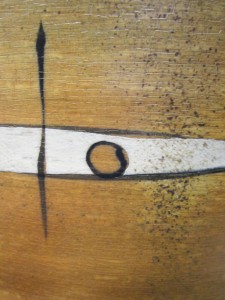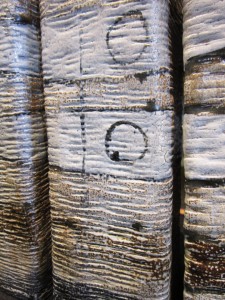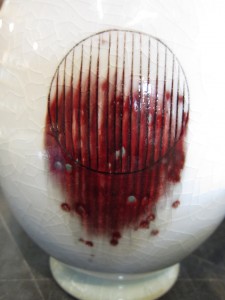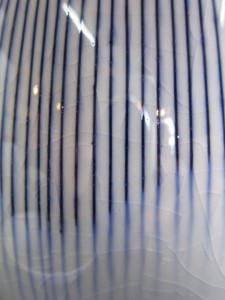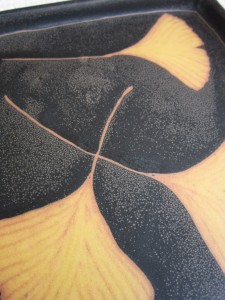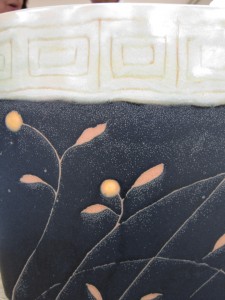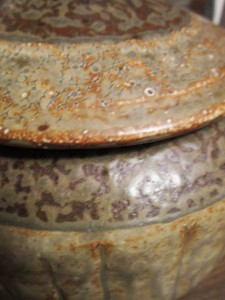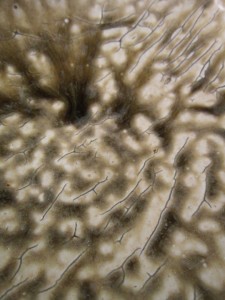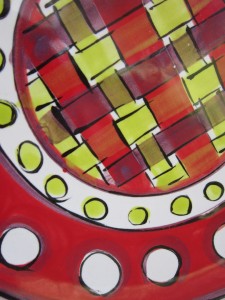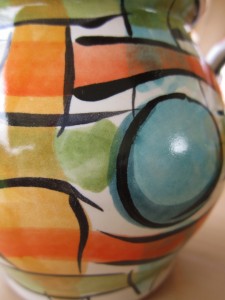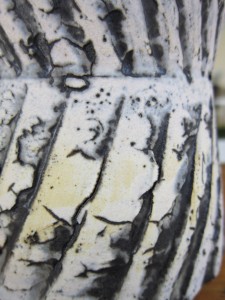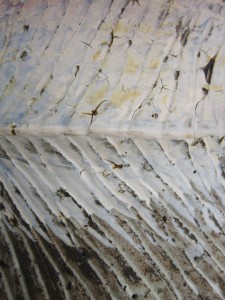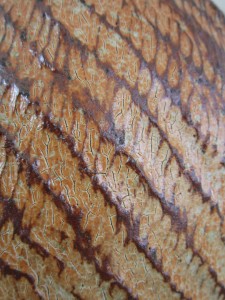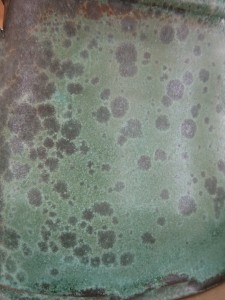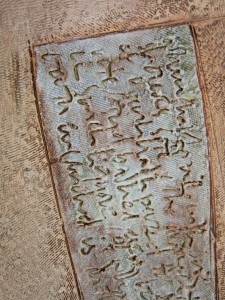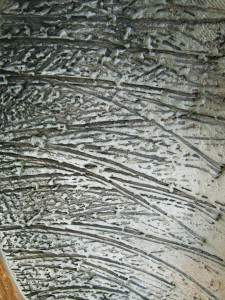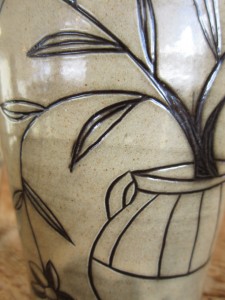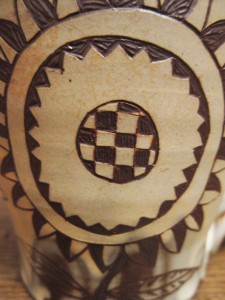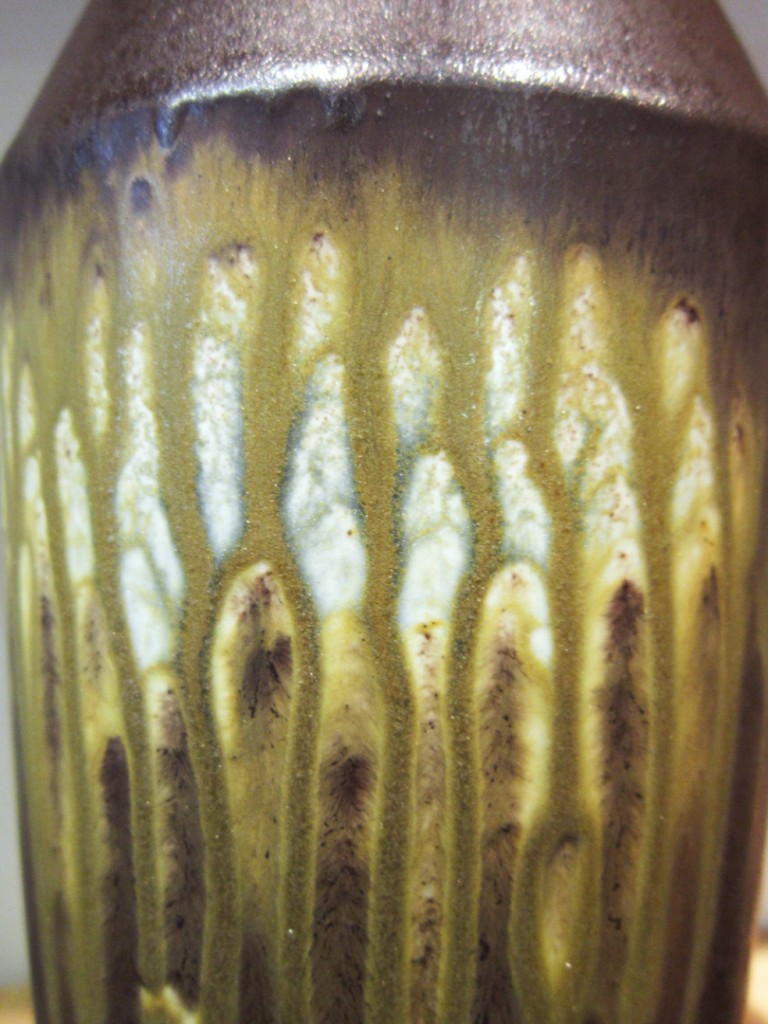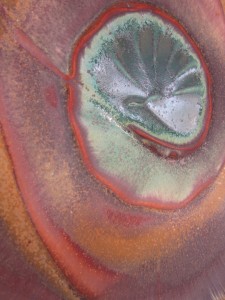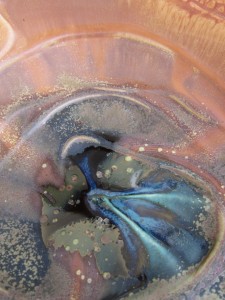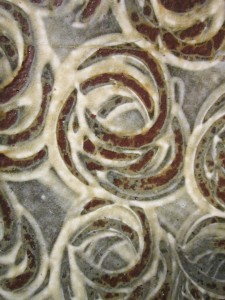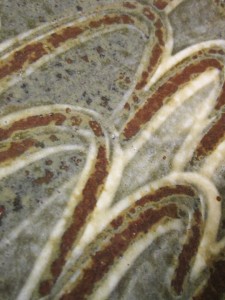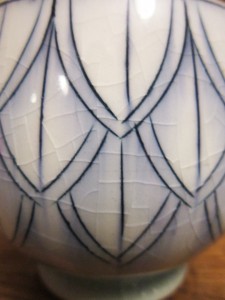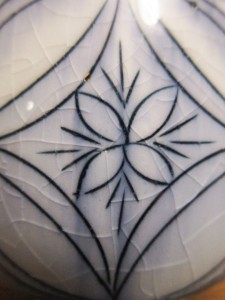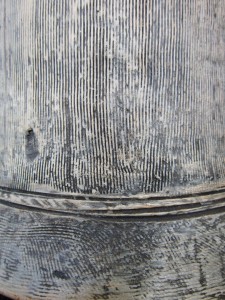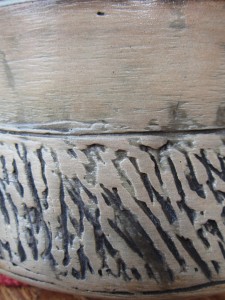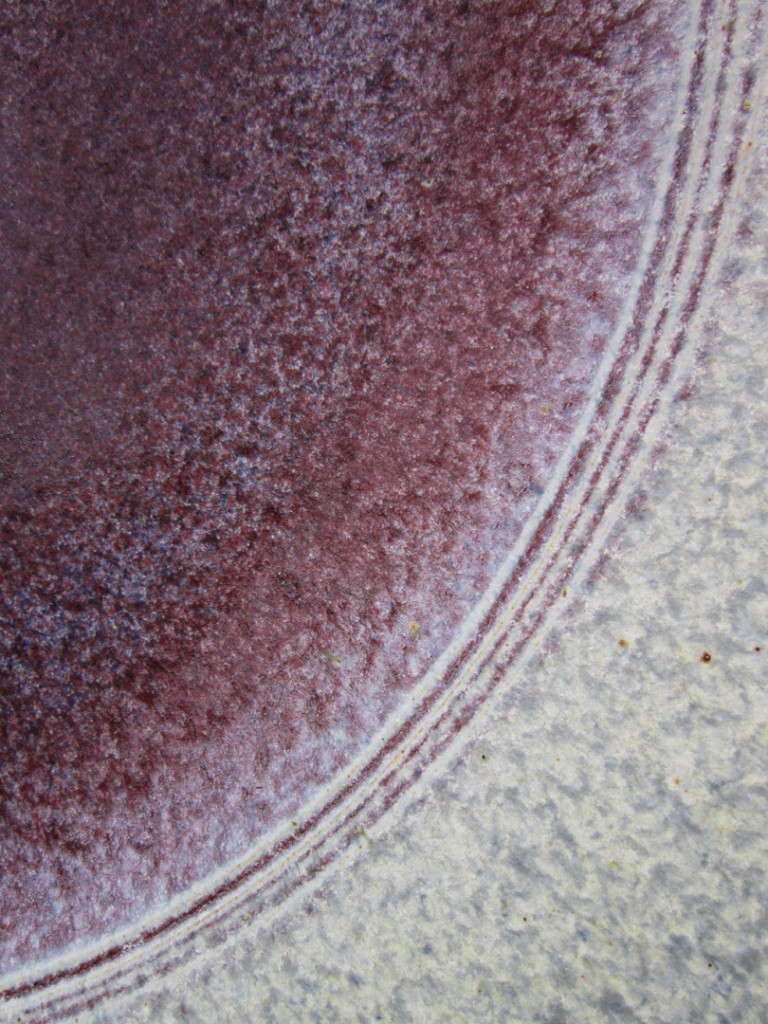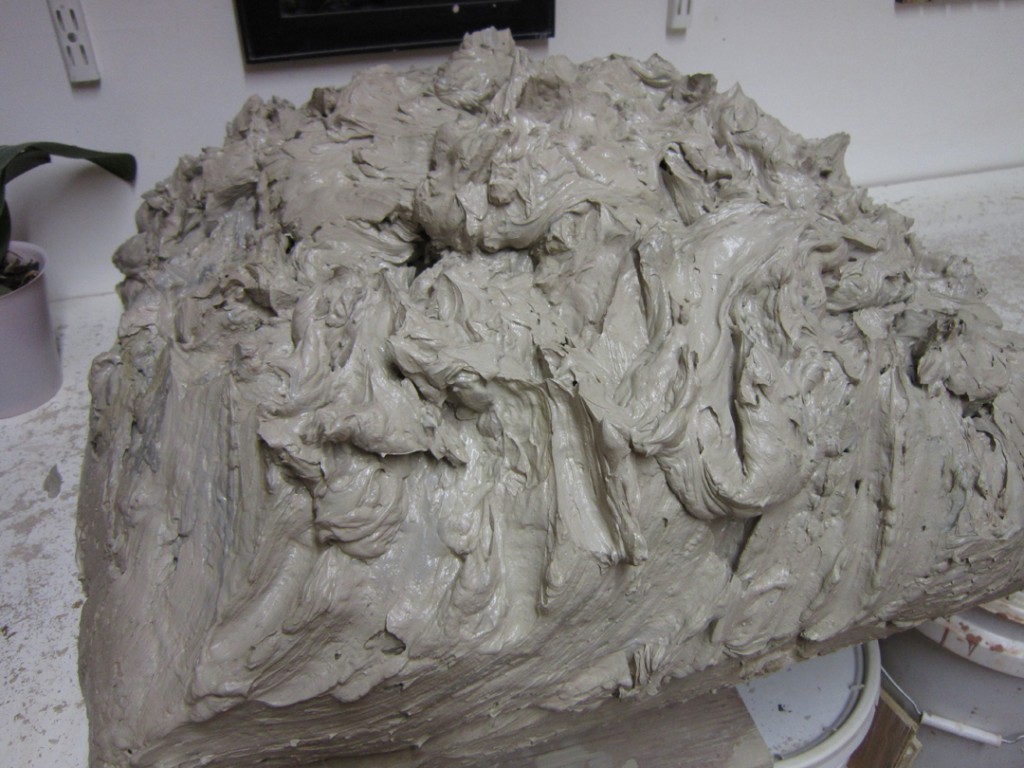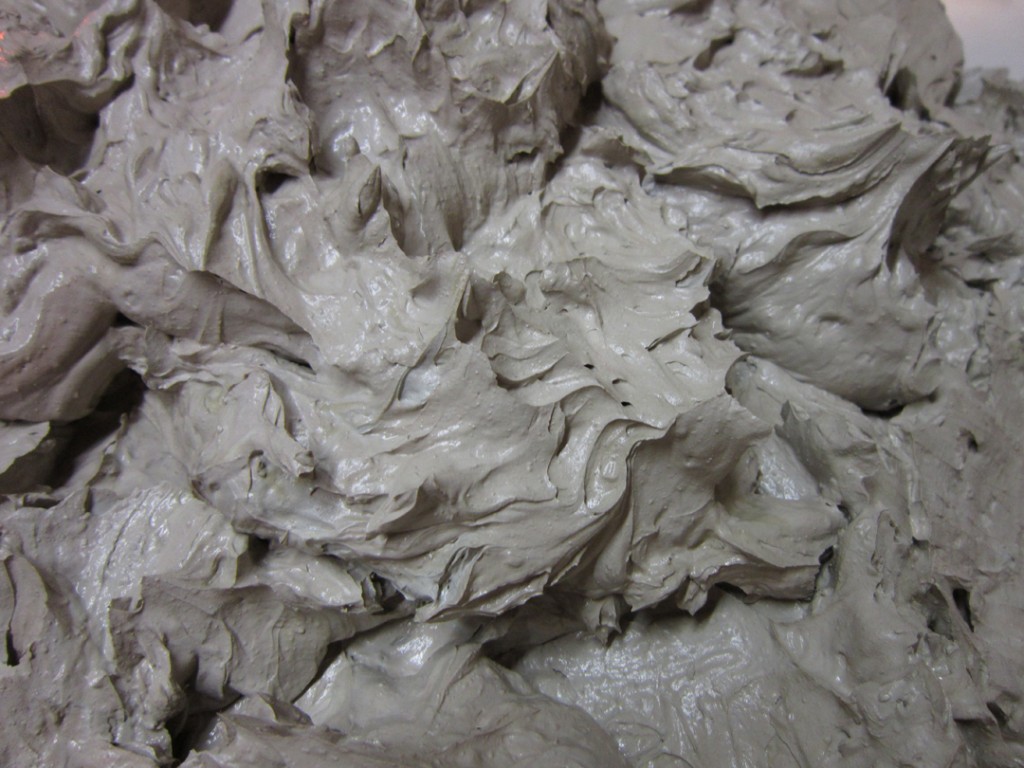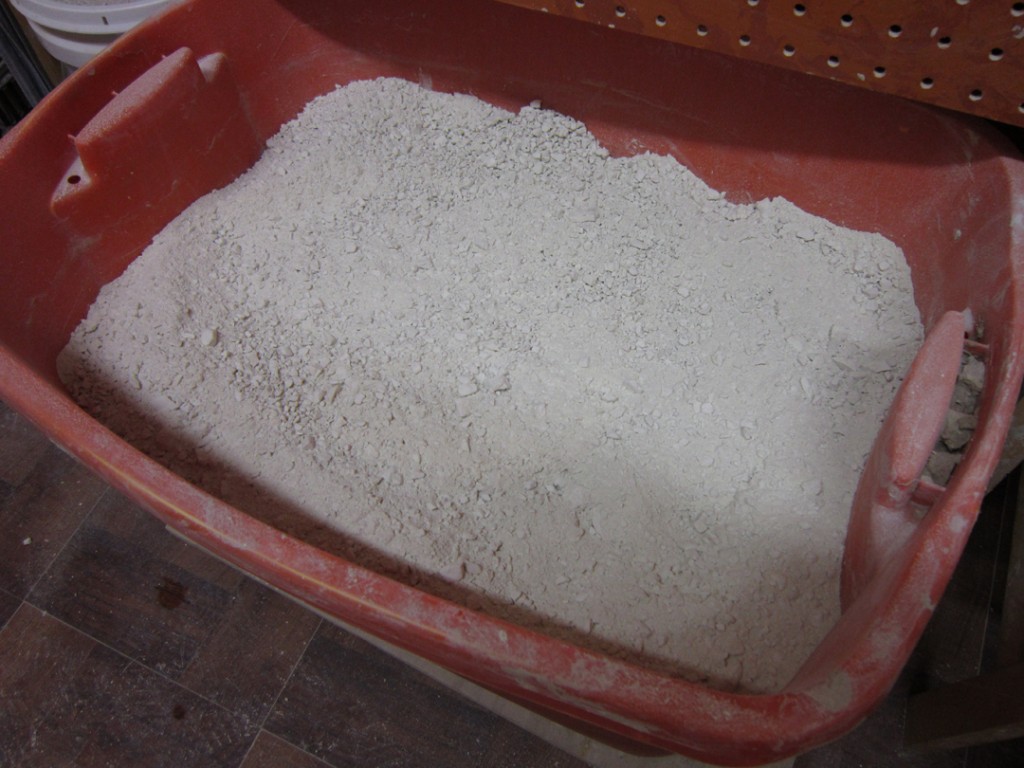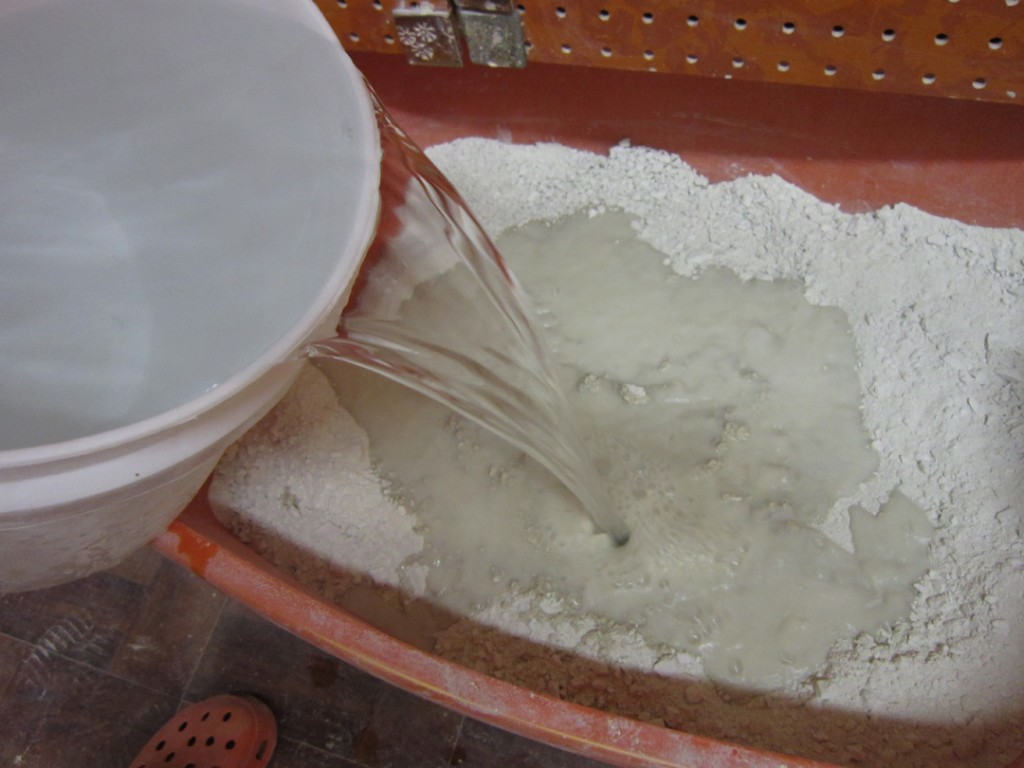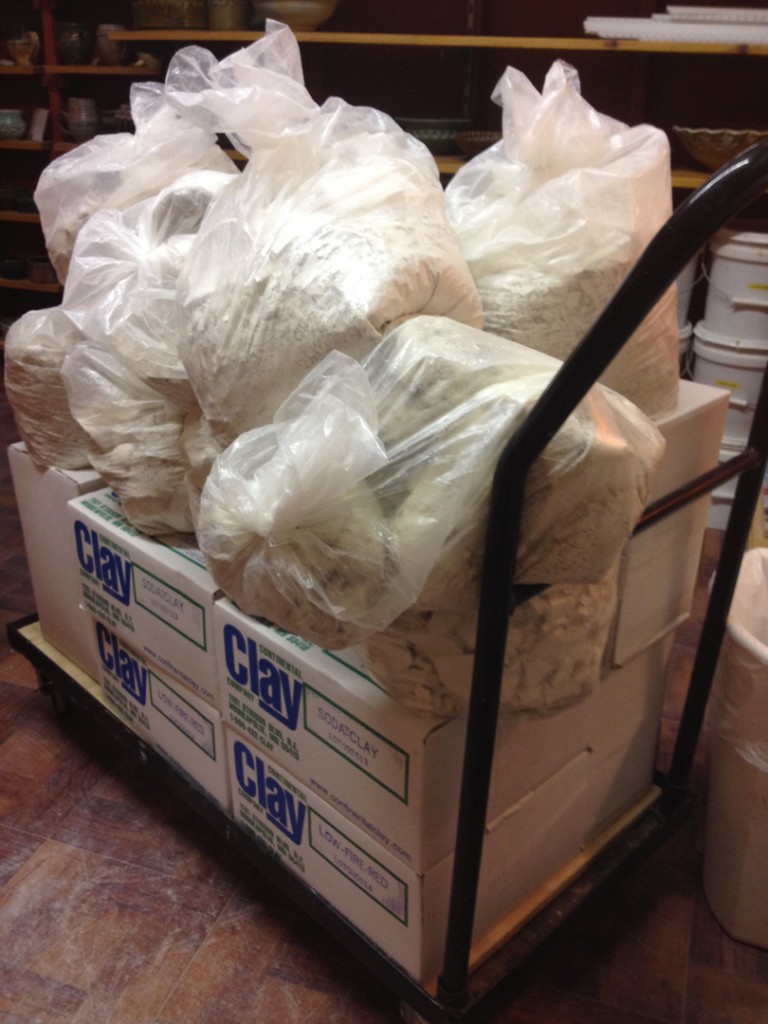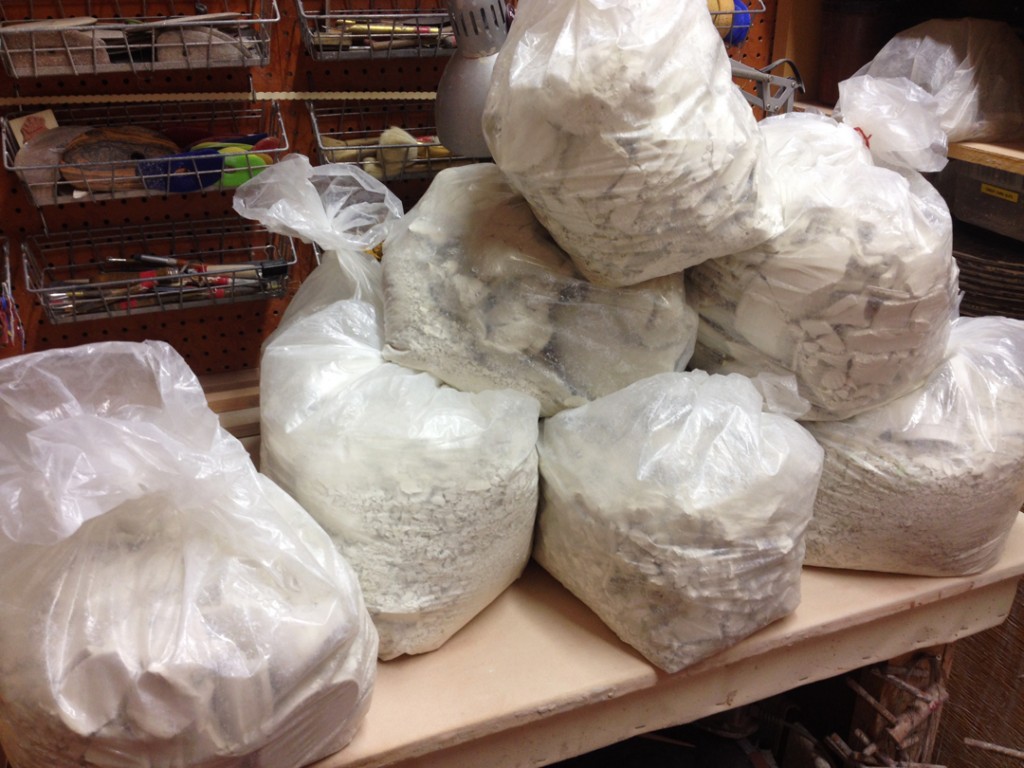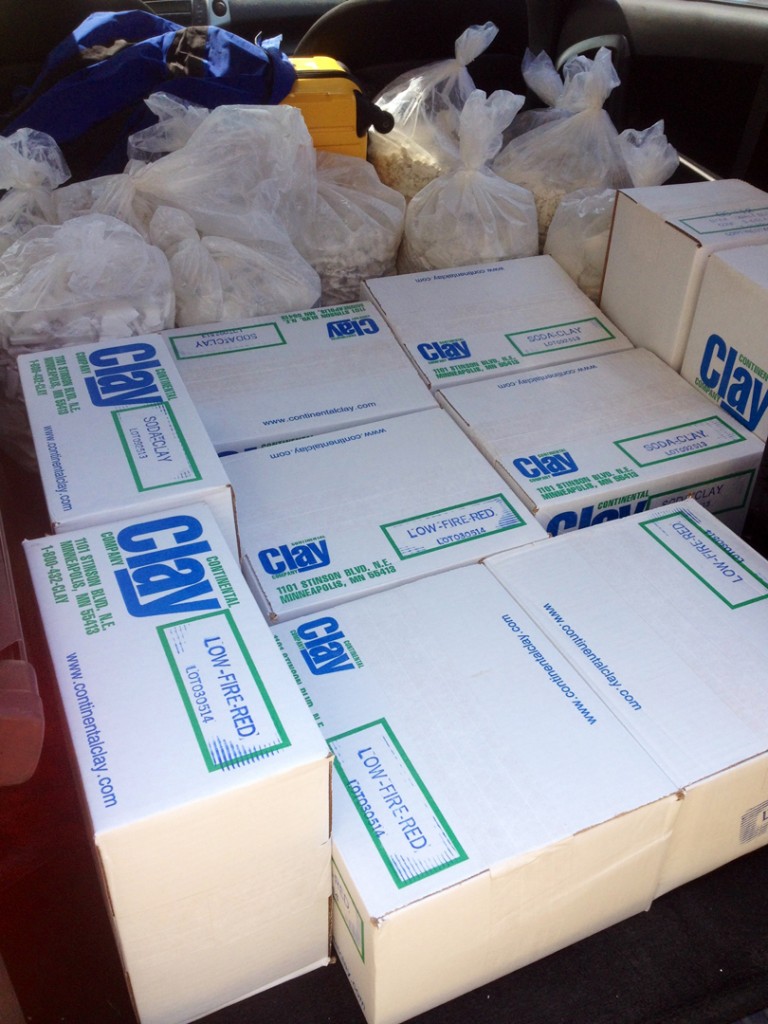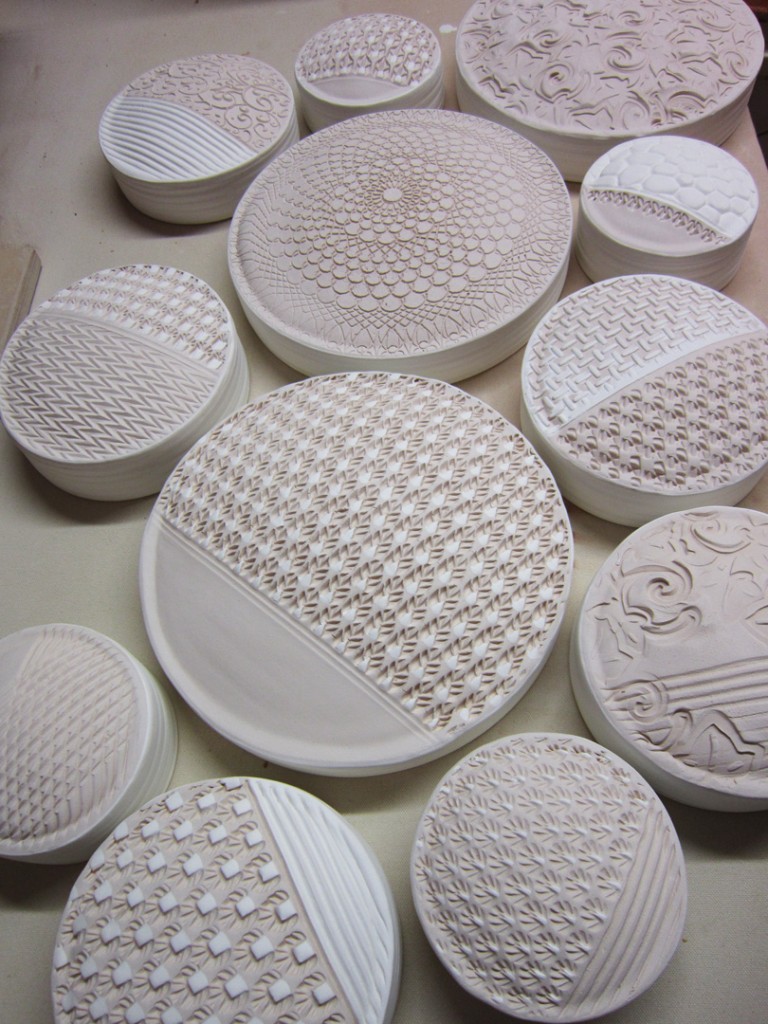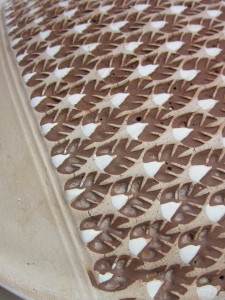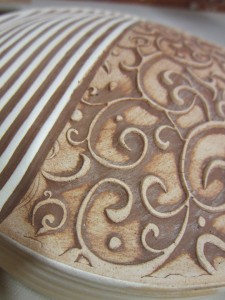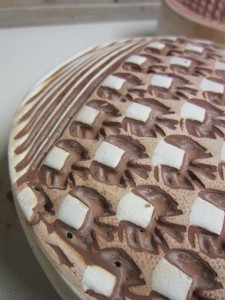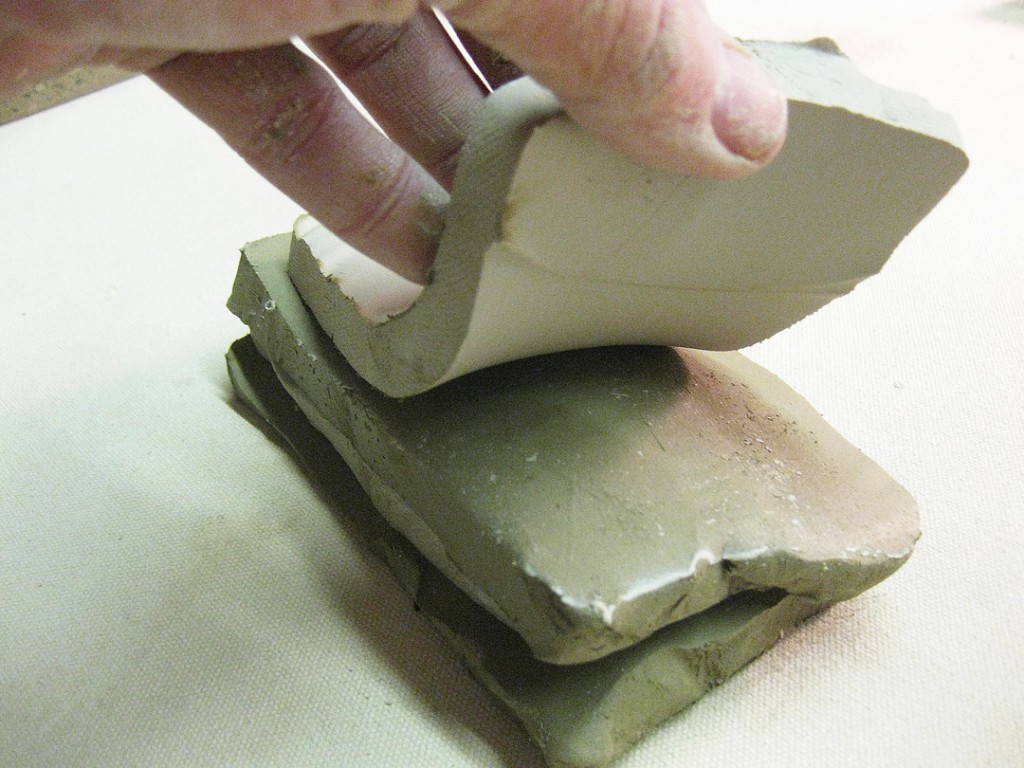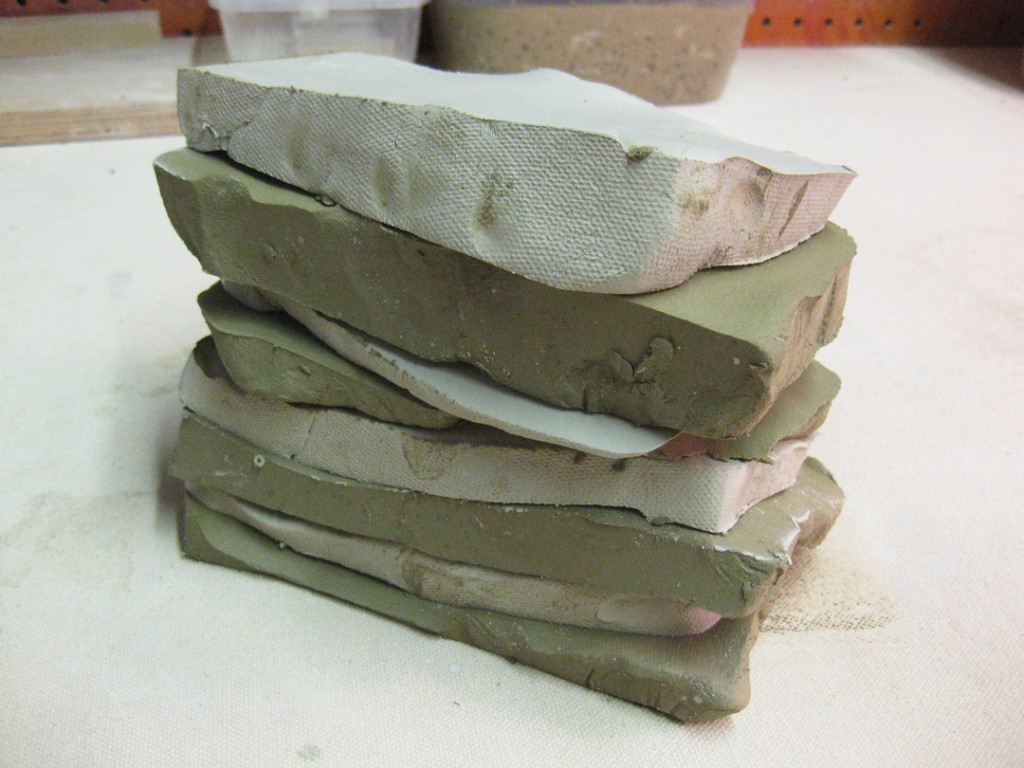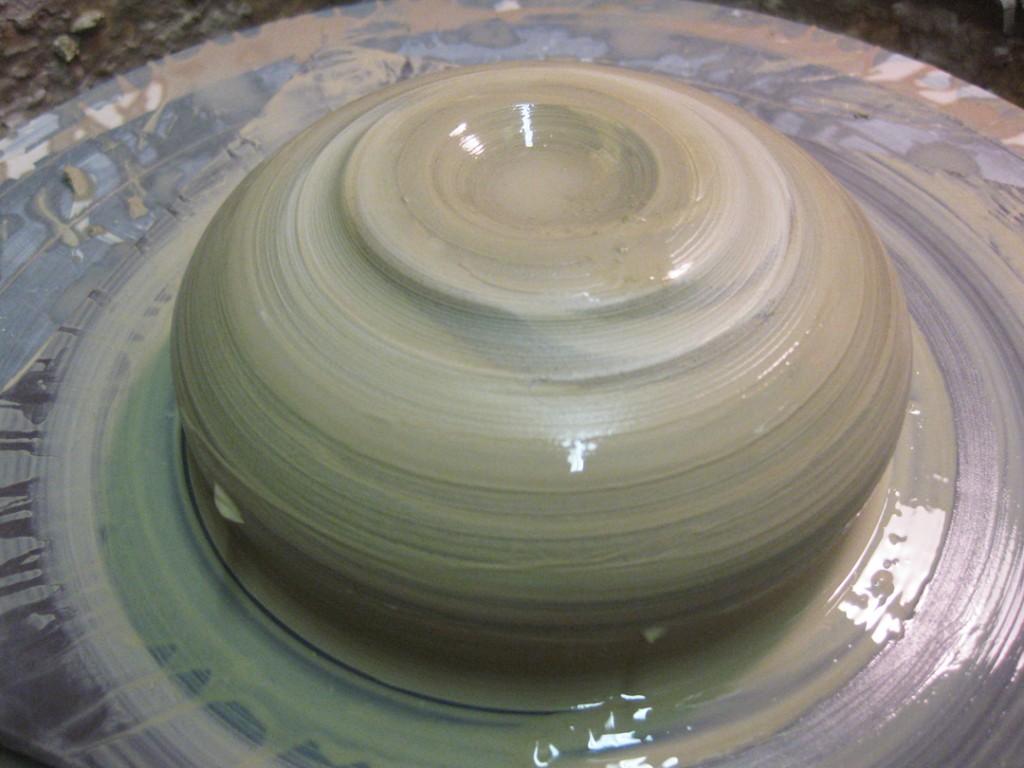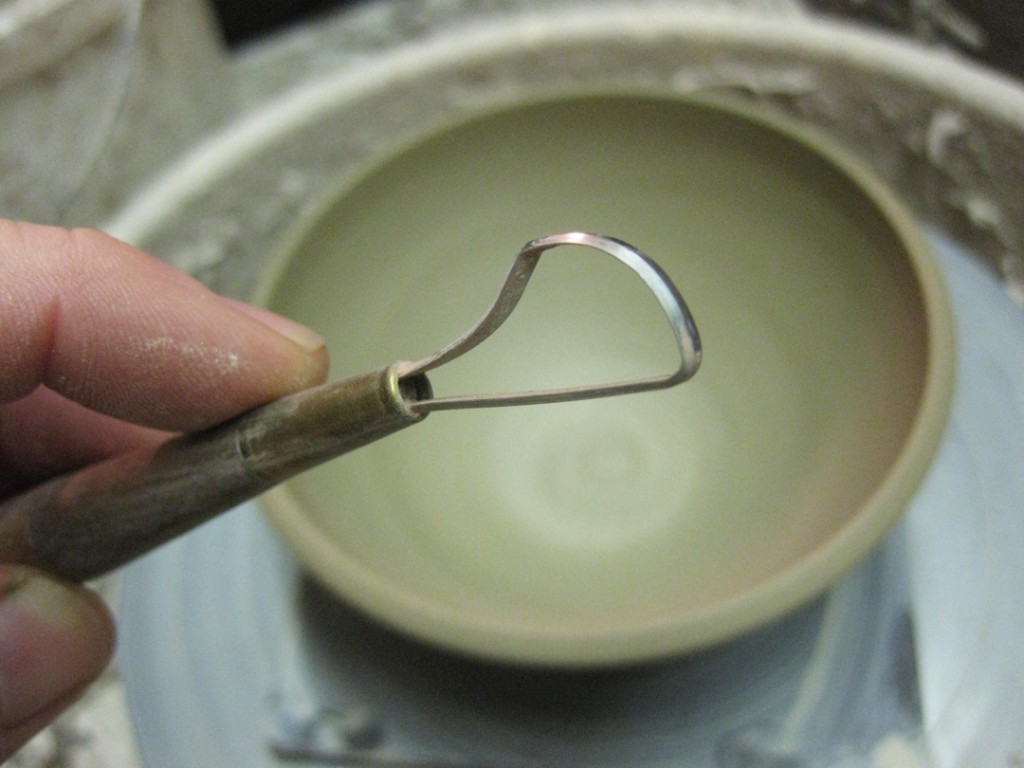So you know when you have a partial bag of “this” clay, and a partial bag of “that” clay. Some of it is a bit too dry. Some of it is a bit too wet. None of it is ready to go. Not quite enough of any one of them to make much of anything. So why not combine them???
As long as they all have the same firing temperature, it’s pretty easy. You might think it takes a lot of wedging. But not really… it’s easier to let gravity do the work for you! It’s a great little trick I learned from Emily Murphy, a former studio neighbor. And I’m going to share it with you!
So I started with three different kinds of clay. Some fairly dry soda clay (top), some squishy, unwedged reclaim mix (middle) and some stiff stoneware with iron (bottom). I start by cutting thin slices of each clay and making new stacks. I try my best to keep the layers even, and restack them by alternating the clay bodies within each stack.

As you can see, each pile is several layers of each different kind of clay.
Some soda. Some reclaim. Some stoneware with iron. Sliced. Layered. Stacked.
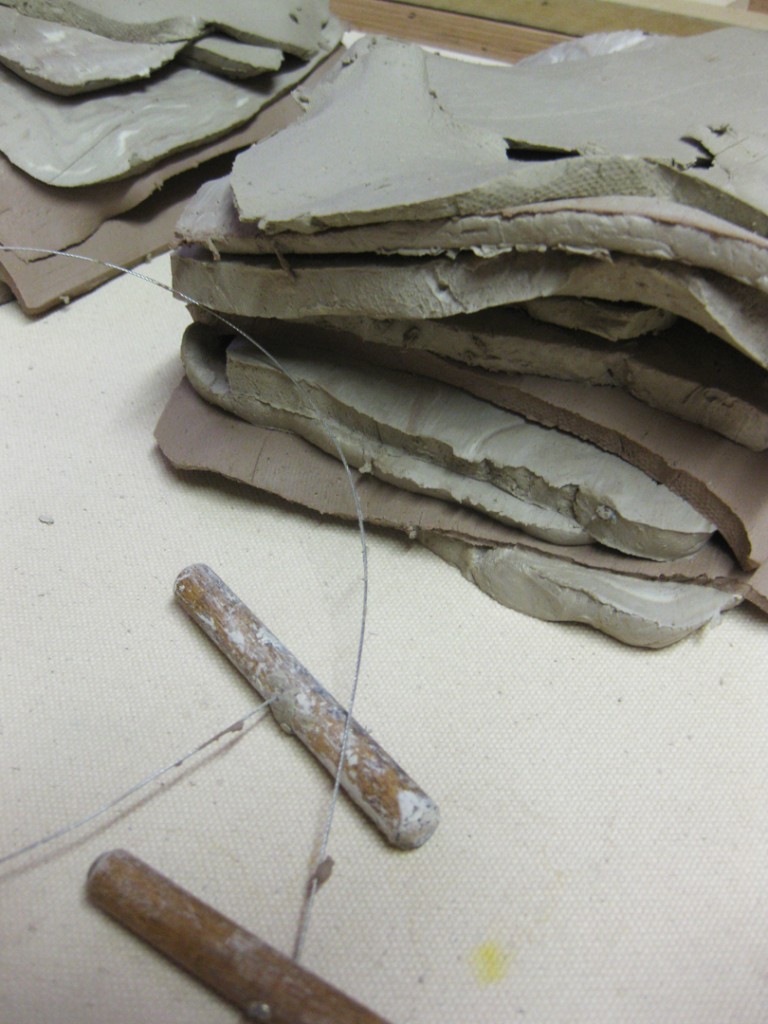
So here’s the stack of clay before I start combining the layers… nothing fancy.

Start by picking up the pile and slamming it down on the wedging table. Let gravity do most of the work. And I find it best to slam it down on the corner of my wedging table directly over the corner leg. Seems sturdier… and doesn’t make nearly as much noise!!!
After a quick slam, cut the clay in half. When you look at it, you can see all of the layers of different clays. I don’t know for sure how many there were… so let’s just say 12 layers for demonstration purposes!

So, after slicing the stack in half, put one piece on top of the other…
and now you’ll have 24 layers in your stack.

Another quick pounding on the table and it squishes together and flattens out a bit.
Cut it in half again, and you can see how your layers have doubled and squished thinner.

Stack one half on top of the other, and suddenly you have 48 layers!
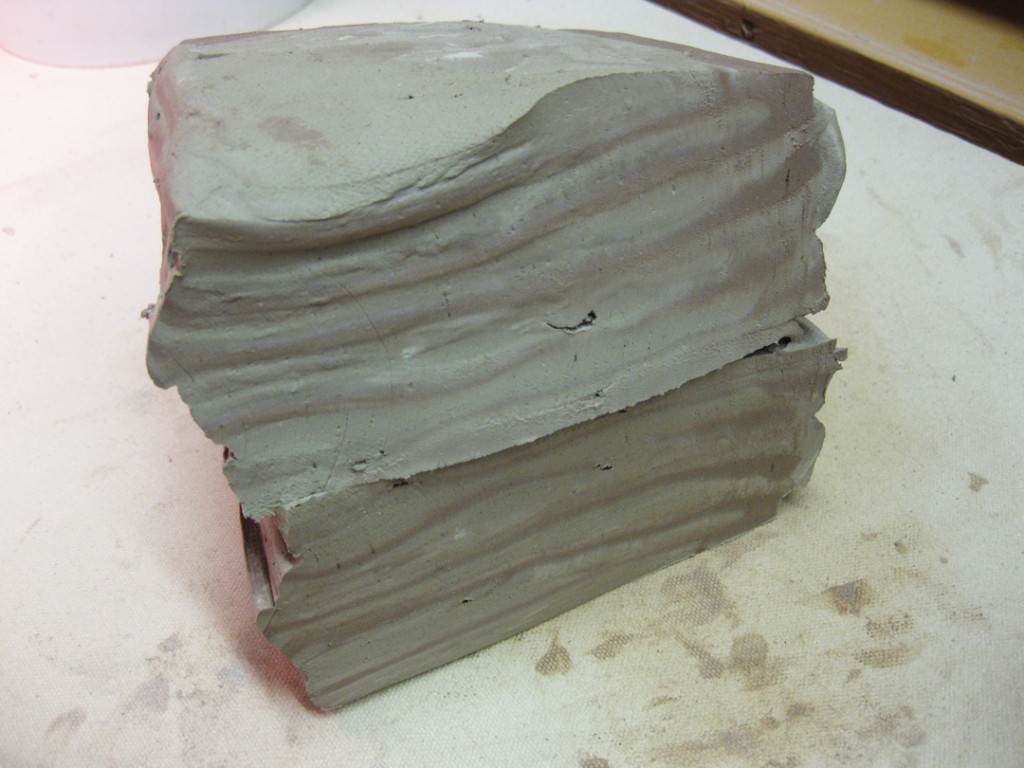
Pound it again, cut in half again… and you’ll see how the layers are getting thinner & thinner.
Just from slicing and dropping it on the table! No power wedging. Very little physical labor.
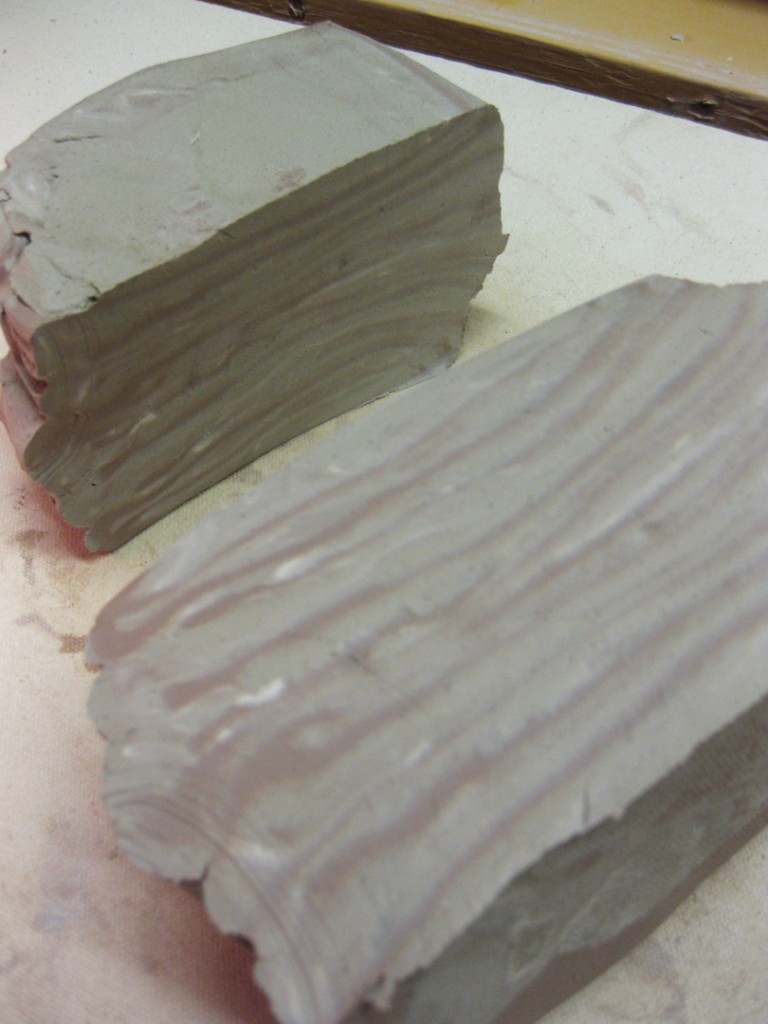
Stack it back up… slam it down and now you’re up to 96 layers!
Pretty amazing how the number of layers multiplies so quickly… more & more, thinner & thinner!
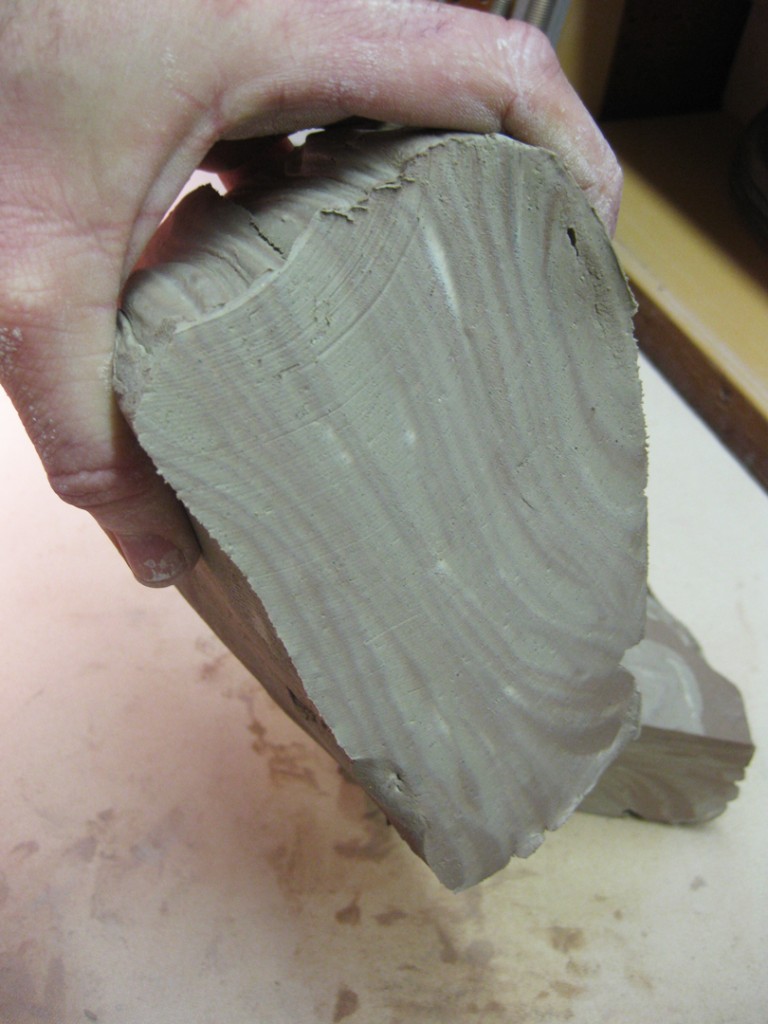
Slice again. Stack again. Slam again. 192 layers!

Slice again. Stack again. Slam again. 384 layers!

Slice again. Stack again. Slam again. 768 layers!

Slice again. Stack again. Slam again. 1,536 layers!… and almost blended.

One last time… Slice again. Stack again. Slam again. 3,072 layers!
And it’s looking pretty well homogenized after some simple slicing & slamming.
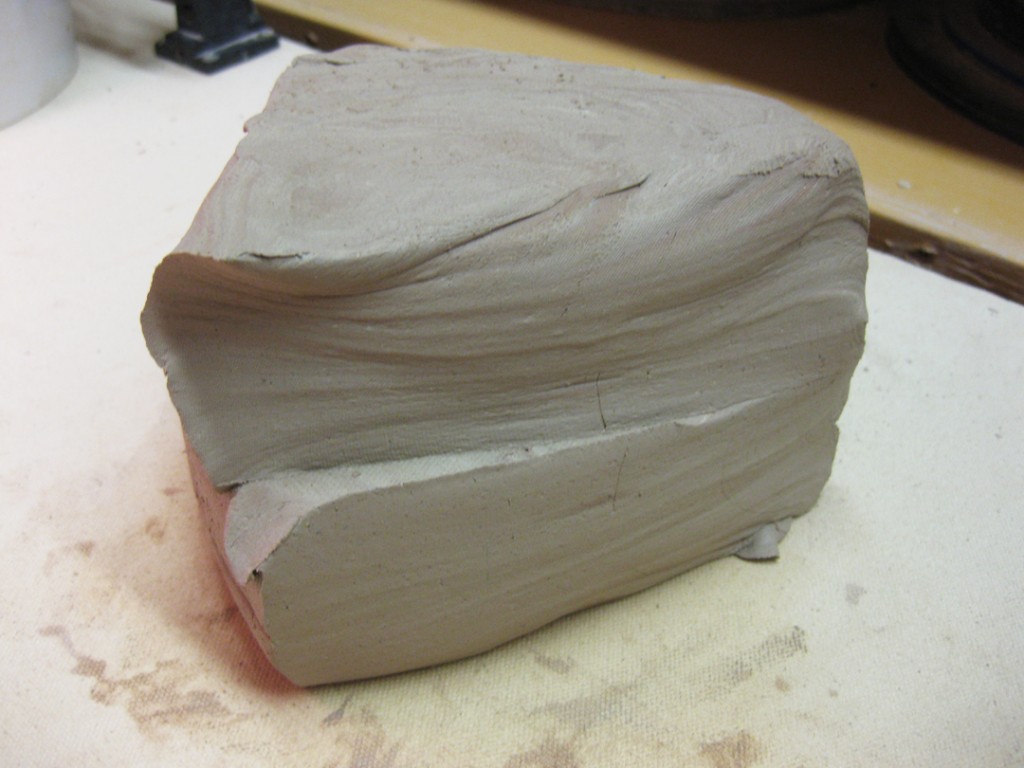
So then I just pounded up the pile a bit and I now have a solid block of clay. The three different clay bodies are well integrated. And the difference in moisture levels has been taken care of. Ready to go. Much better to use.
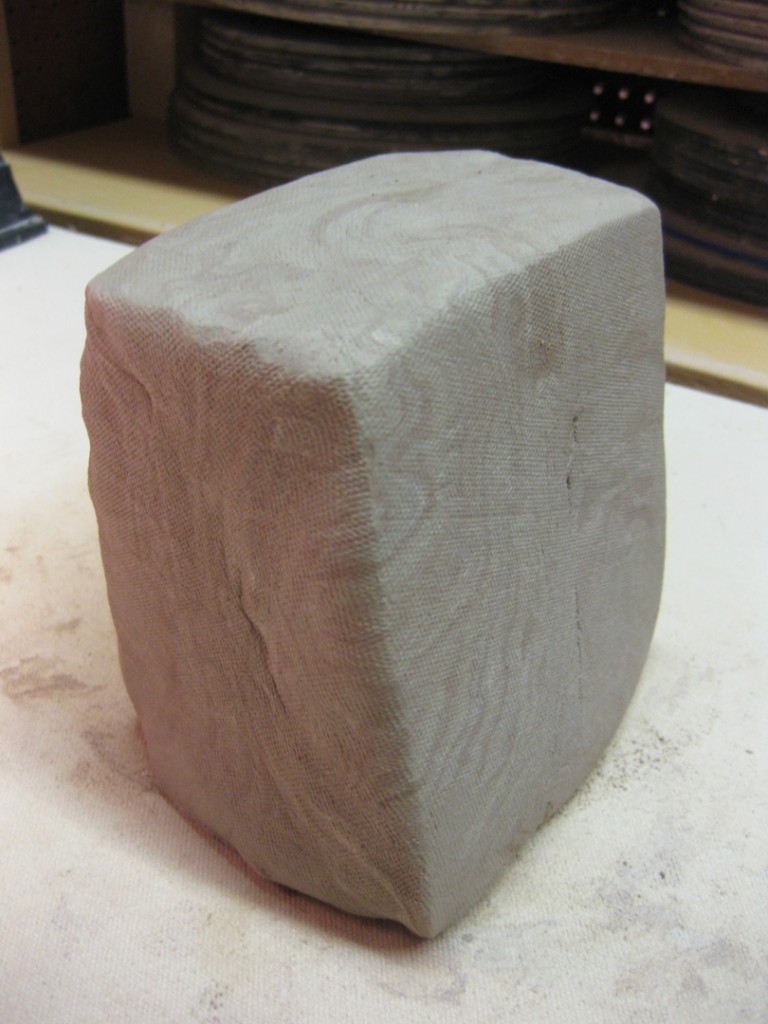
I tackled all seven of the layered stacks I made from the three different clay bags.
Slice. Stack. Slam. Repeat… Slice. Stack. Slam. Repeat… Slice. Stack. Slam. Repeat…
And now I’ve got a tower of clay ready to go. Sure, the clay still needs some final wedging just before throwing. And now I’ve got to make something with this tower of fun!

